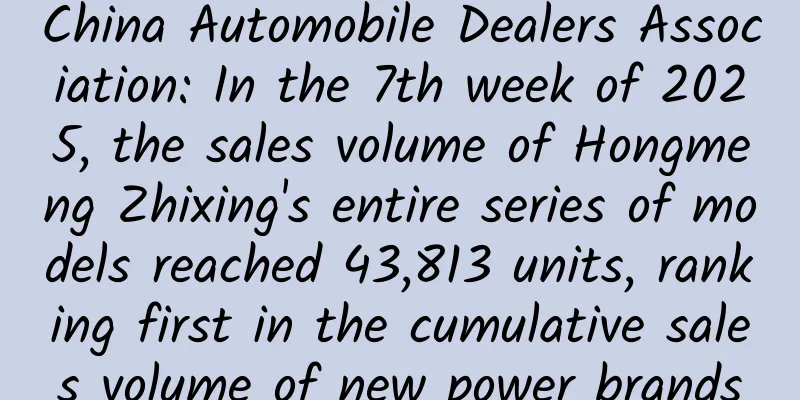Xiaomi opens a flagship store on JD.com: no longer selling futures but spot goods?

|
On May 28, Xiaomi and JD.com jointly announced that Xiaomi's JD.com official flagship store was officially launched at 10 a.m. on the same day. Consumers can enter the Xiaomi JD.com official flagship store through multiple channels such as PC, JD.com mobile client, WeChat shopping, and mobile QQ shopping. Xiaomi's main sales channel has always been e-commerce, mainly the Xiaomi official website. As early as July 2013, Xiaomi opened its first authorized online store on Tmall outside of its official website, and it adopted a direct sales model, operated by Xiaomi Technology itself. It is somewhat surprising that Xiaomi has not officially entered JD.com, the second largest e-commerce platform in China. As to why Xiaomi has not been on JD.com, there is an article online titled "Why did Xiaomi open a store on Tmall instead of cooperating with JD.com when it built its own channels?" It seems to make sense, saying that it is due to the escalation of the conflict between Xiaomi and JD.com. JD.com, which has never been directly authorized by Xiaomi, often puts advertisements like "Xiaomi phones are excellent, JD.com recommends Meizu MX3" on Xiaomi mobile phone sales pages to promote other brands such as Red Pepper, Lenovo, Meizu, and Xiaokele, which makes Xiaomi unhappy. So why did Xiaomi go against its usual practice and turn to cooperation with JD.com this time? Pressure from competitors After experiencing rapid growth in recent years, Xiaomi's growth rate has begun to slow down and is facing bottlenecks. Xiaomi's model of focusing on creating popular single products is easy to be imitated by its peers. In fact, many domestic mobile phone manufacturers have followed Xiaomi with similar strategies and achieved certain success. In terms of hardware product models, Xiaomi's popular single product strategy is not difficult to copy, but has blossomed everywhere, from traditional domestic first-line brands such as China Cool Union to later followers, all of which have learned to imitate it. However, the market capacity is limited. Although some people have predicted that the domestic smartphone market size is expected to reach 500 million units this year, the sales volume in the first quarter was only 90 million units, so this expectation may not be realized. At the beginning of the year, there were several brands that announced that their sales target for this year was 100 million units. You can imagine how fierce the competition is. On May 11, JD.com and Meizu Technology, a well-known domestic mobile phone manufacturer, held a signing ceremony in Beijing, announcing the deepening of strategic cooperation and signing an annual procurement agreement of 6 billion yuan. A week later, Coolpad Dashen also signed a cooperation order of 6.5 billion yuan with JD.com. As we all know, JD.com currently occupies a leading position in the e-commerce market of digital 3C categories, with a good brand effect and a large user base. If Xiaomi still sticks to its original thinking at this time, it will obviously be ceding JD.com's market to other brands. Therefore, instead of watching the loss of users and market, it is better to abandon the previous contradictions and work together with JD.com. Poor overseas presence and difficulties in growth and development On the other hand, although Xiaomi has developed rapidly in recent years, it has encountered considerable challenges and even difficulties this year. Gartner released a press release on the 27th of this month, saying that Apple continued to grow explosively in China in Q1, with sales soaring 72.5%, replacing Xiaomi for the first time to become the leader in China's smartphone market. Samsung also learned from its mistakes and finally made a comeback, wiping out its previous shame and regaining the top spot in the global smartphone rankings. Xiaomi, which ranked fifth last quarter, fell out of the top five this quarter, losing to Lenovo and Huawei, and also losing to LG. If we take LG, the fifth-largest smartphone brand that is the closest to Xiaomi, as a reference, and simply multiply its Q1 sales of 15.42 million units by 4, Xiaomi's expected sales this year is only about 60 million units. On January 4, Lei Jun announced that Xiaomi sold 61.12 million smartphones in 2014. Based on this calculation, it is indeed very difficult for Xiaomi to achieve its goal of 100 million units this year. The domestic market is highly competitive, and Xiaomi is also in trouble in developing foreign markets. In India, Xiaomi encountered a patent lawsuit from Ericsson, and experts generally do not think Xiaomi will win the case. In Europe, although Xiaomi has begun to expand the market and brought almost all of its current product lines, it lacks a leading product - smartphones. Obviously, Xiaomi’s smartphone patent reserves are insufficient to support its overseas development, and it still has to focus on the domestic market. The inevitable choice from futures to spot This time, Xiaomi's official flagship store on JD.com sells a very complete range of products, from mobile phones, mobile power banks to air purifiers, and what's very important is that they are basically in stock. Xiaomi's previous reservation model was often criticized, and even ridiculed as a futures model. In the case of rapid brand development, products are in short supply, and brands in a strong position usually consider not expanding channels, but how to increase production capacity. Therefore, JD.com, which has some minor contradictions, is difficult to get Xiaomi's favor. Anyway, my products are not unsaleable. Some dealers are scrambling to get the goods, and even throwing them to scalpers can create more value. However, as the scale increases, the production capacity of the foundry also gradually increases, and Xiaomi's supply capacity is greatly improved. After the rapid development period of the brand, it is bound to enter a stable period. At this time, the supply and demand relationship in the market has undergone subtle changes, coupled with the competition of homogeneous products, Xiaomi has transitioned from the futures era to the current spot era. In the past, there was no worry about sales, but now there is a need to find more shipping channels for the huge production capacity, and the role of JD.com's e-commerce channel cannot be ignored at this time. The annual 618 is coming soon, which is the second largest promotion day for Chinese e-commerce in a year after Tmall's Double Eleven. Xiaomi's early layout on JD.com before the arrival of 618 is obviously a deliberate move. Xiaomi and JD.com cooperate to achieve mutual benefit and win-win situation Xiaomi once said that services are provided wherever users are. Therefore, Xiaomi was able to forgive JD.com's various gaps in the past, opened JD.com's official flagship store and authorized JD.com to directly operate. It is nothing more than valuing JD.com's self-operated traffic dividend and user base. By entering JD.com, it will also gain a purchase entrance on WeChat and mobile QQ in the future, which can be said to kill two birds with one stone. For JD.com, Xiaomi's timely joining not only boosts sales performance, but also represents a kind of support. JD.com's biggest rival is Tmall, which is owned by Alibaba. After Tmall launched the strategic partnership project, winning the participation of Xiaomi, a representative Internet mobile phone brand, is also a counterattack against Tmall. Therefore, Xiaomi opening an official flagship store on JD.com is beneficial to both parties and can be regarded as a mutually beneficial and win-win business. As a winner of Toutiao's Qingyun Plan and Baijiahao's Bai+ Plan, the 2019 Baidu Digital Author of the Year, the Baijiahao's Most Popular Author in the Technology Field, the 2019 Sogou Technology and Culture Author, and the 2021 Baijiahao Quarterly Influential Creator, he has won many awards, including the 2013 Sohu Best Industry Media Person, the 2015 China New Media Entrepreneurship Competition Beijing Third Place, the 2015 Guangmang Experience Award, the 2015 China New Media Entrepreneurship Competition Finals Third Place, and the 2018 Baidu Dynamic Annual Powerful Celebrity. |
<<: Will the next iPhone be changed to cater to China?
>>: iPhone 6C leak is not a failure, it is good for Apple
Recommend
Freezing means eternal life? After this deadline, please "throw away" frozen meat!
Review expert: Peng Guoqiu, deputy chief physicia...
Are you healthier if you are lazy? If you follow these 10 lazy habits, you will be 5 years younger. How many of them do you have?
When we were young, my mother told us that we sho...
Does the 2018 Marketing Calendar Work? How should operators plan the timing of activities correctly?
An auspicious day must be chosen for the start of...
Tencent Animation User Operation Growth Analysis Plan: From 5 million to 30 million DAU!
In order to apply for the Tencent Animation proje...
If you want to make smart hardware, listen to these four pieces of advice
[[131781]] In recent years, Sinovation Ventures h...
The difference between communication and marketing is a good story
What do most people do when they build a brand? T...
Two steps to improve your product competitiveness and avoid homogenization
Below we will analyze from two perspectives: diff...
How did Meilishuo get its first 1 million users?
The preparation for the seed user Meilishuo, which...
Plants' battle: From one cell to global domination
Recently, the BBC's latest masterpiece "...
All mobile practitioners should know: What exactly is deep linking?
In recent years, as startups have used, improved,...
Is the effect of information flow advertising poor? You may need an operations plan!
Earlier, Coca-Cola officially introduced the posi...
Is colorectal cancer a "foolish cancer"? If you have these 4 symptoms, it is recommended to check as soon as possible!
In the past six months, Ms. Fang has suffered fro...
SEIA: U.S. solar installed capacity is expected to reach 324 GW by 2023
A report jointly released by the Solar Energy Ind...
CP Marketing Strategy of Internet Celebrities
The most popular CP on Tik Tok has broken up. On ...
Drinking a cup of honey water every day can improve your skin and relieve constipation? Don’t drink it carelessly!
"Can a cup of honey water every day nourish ...









